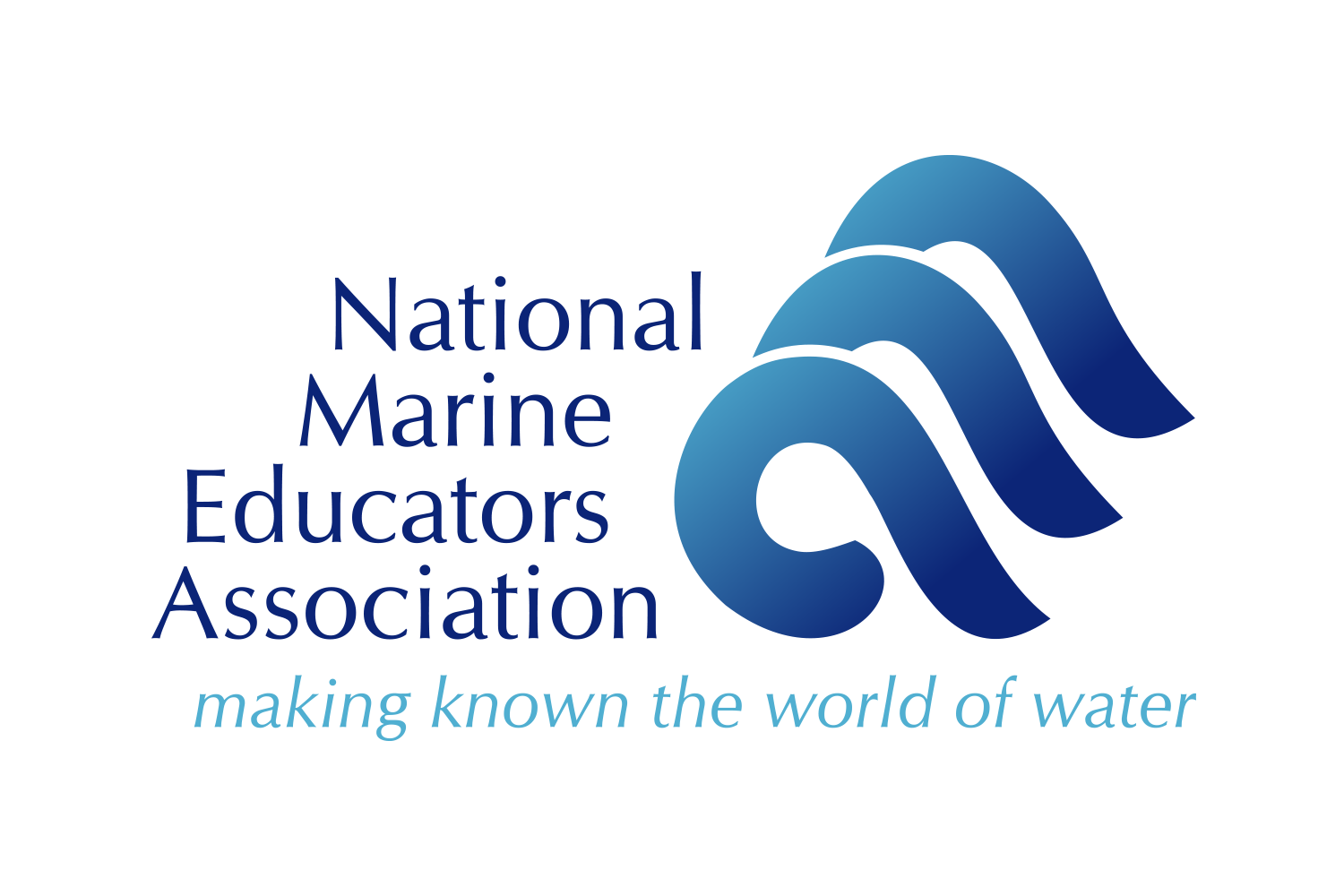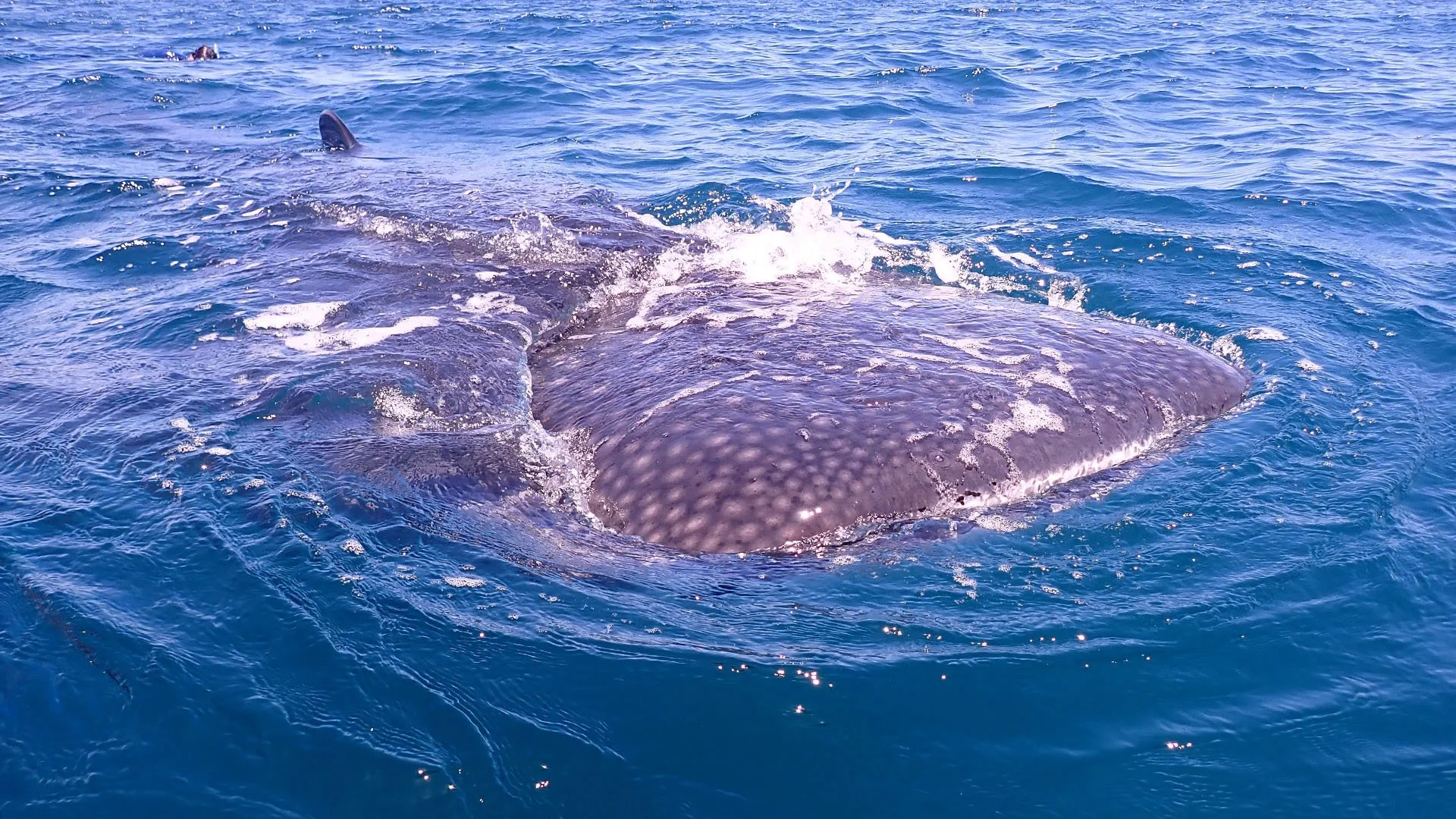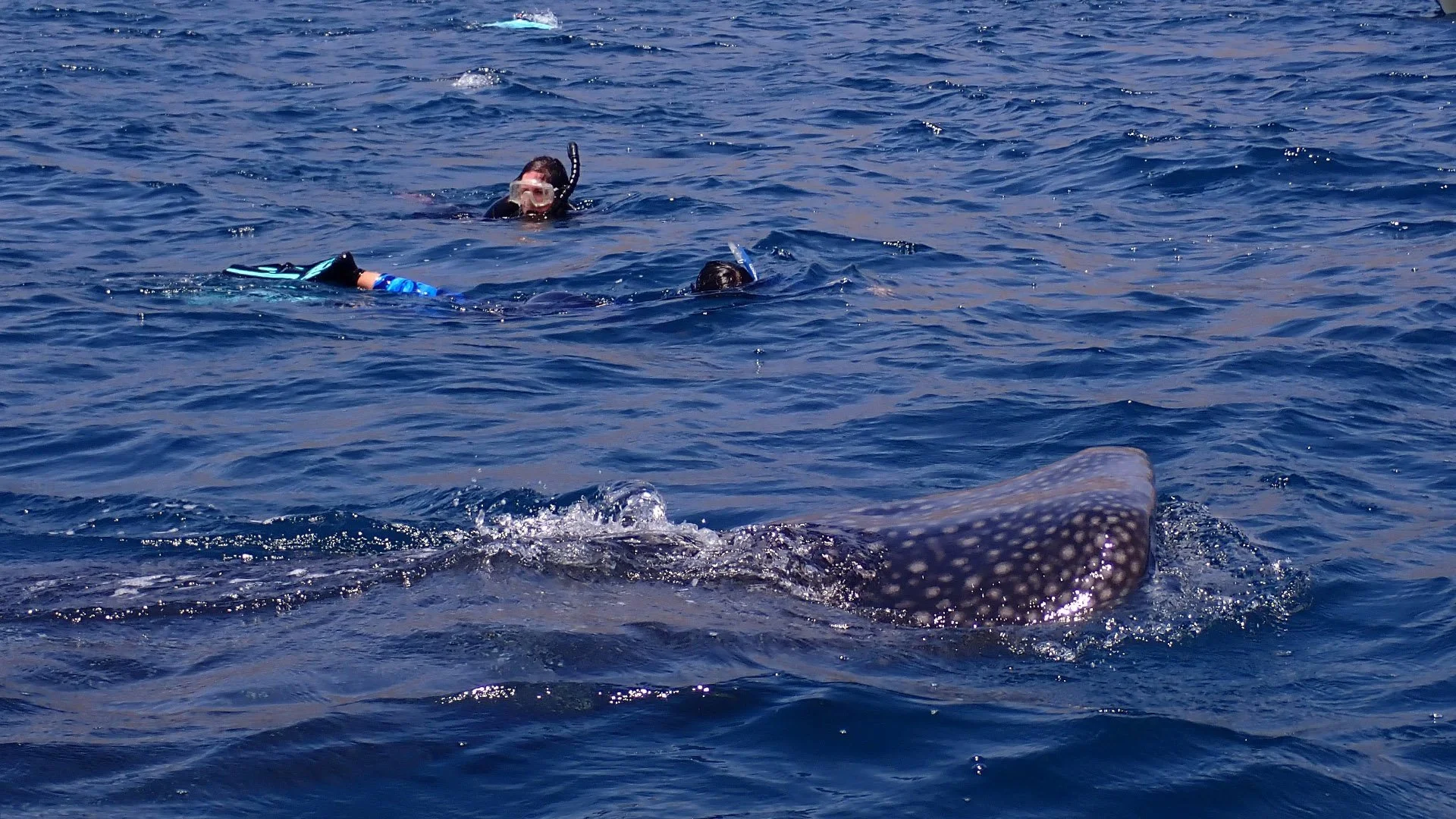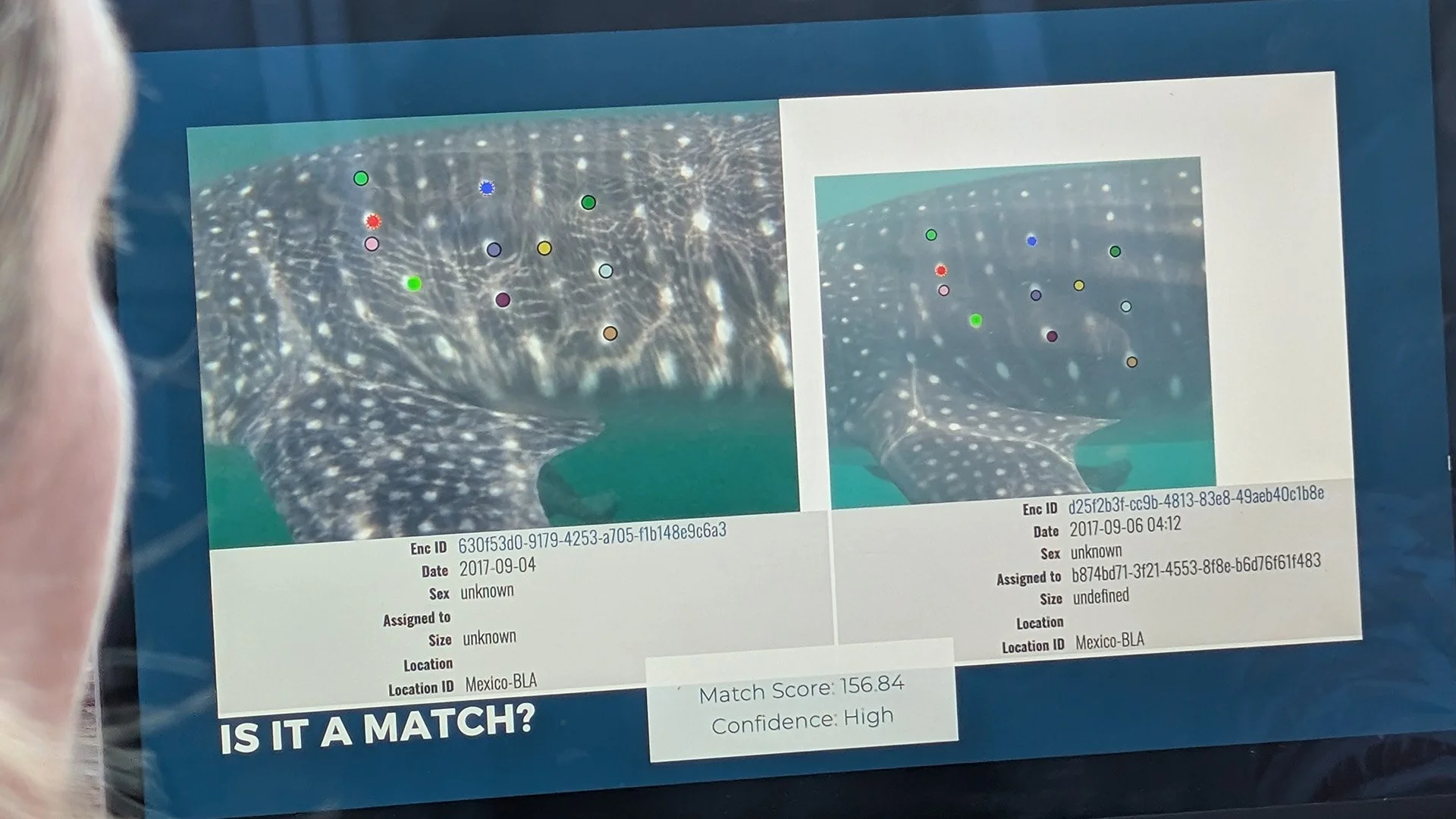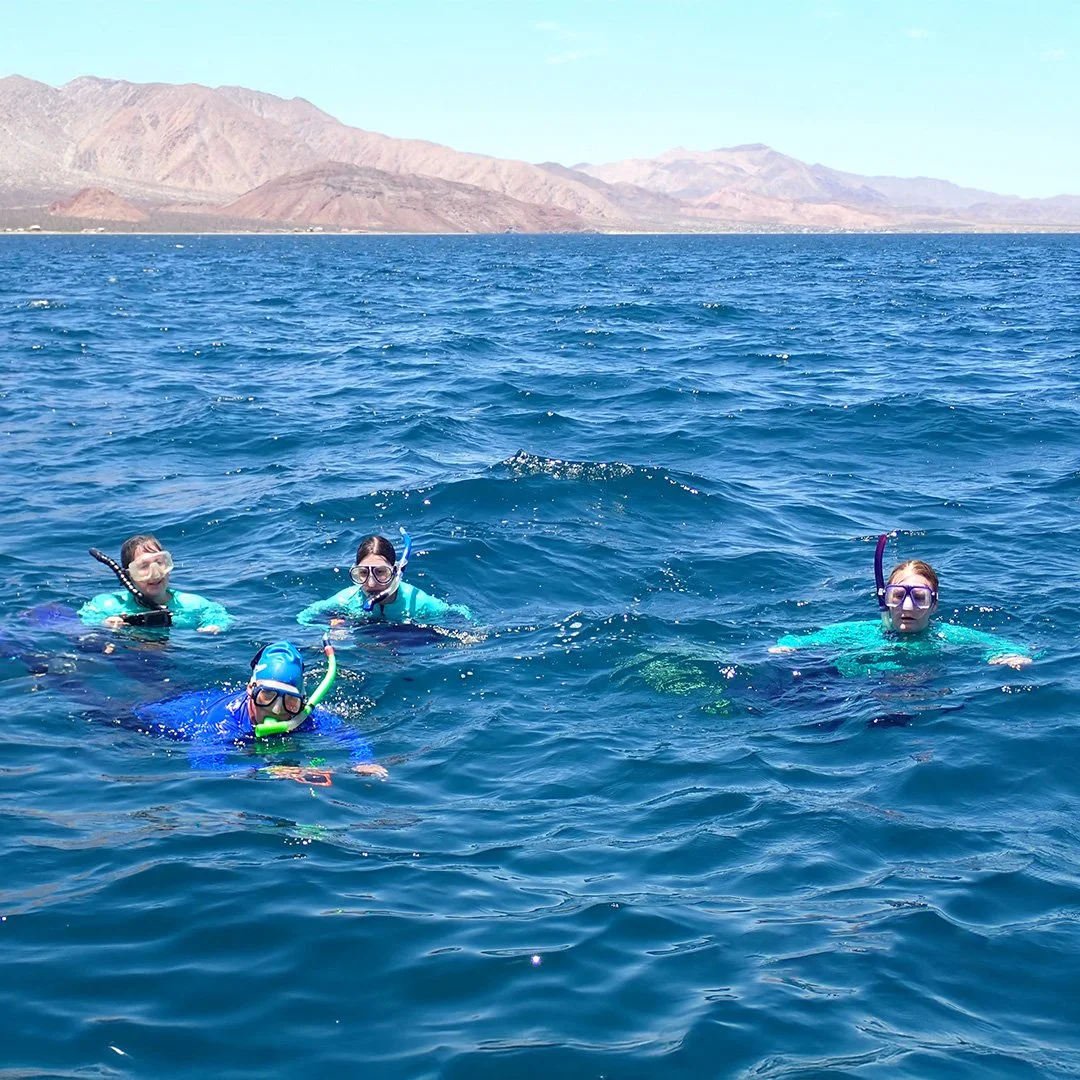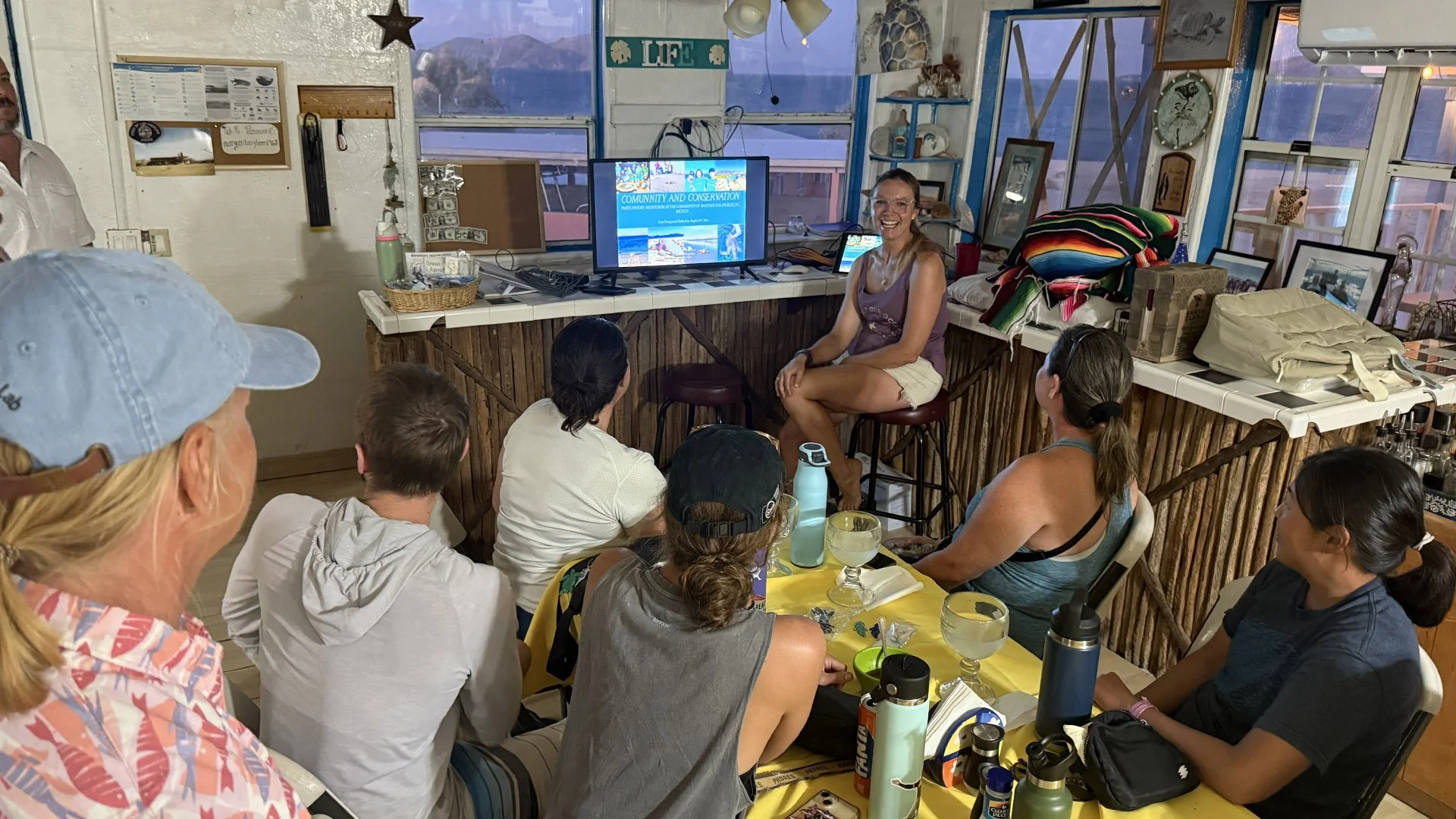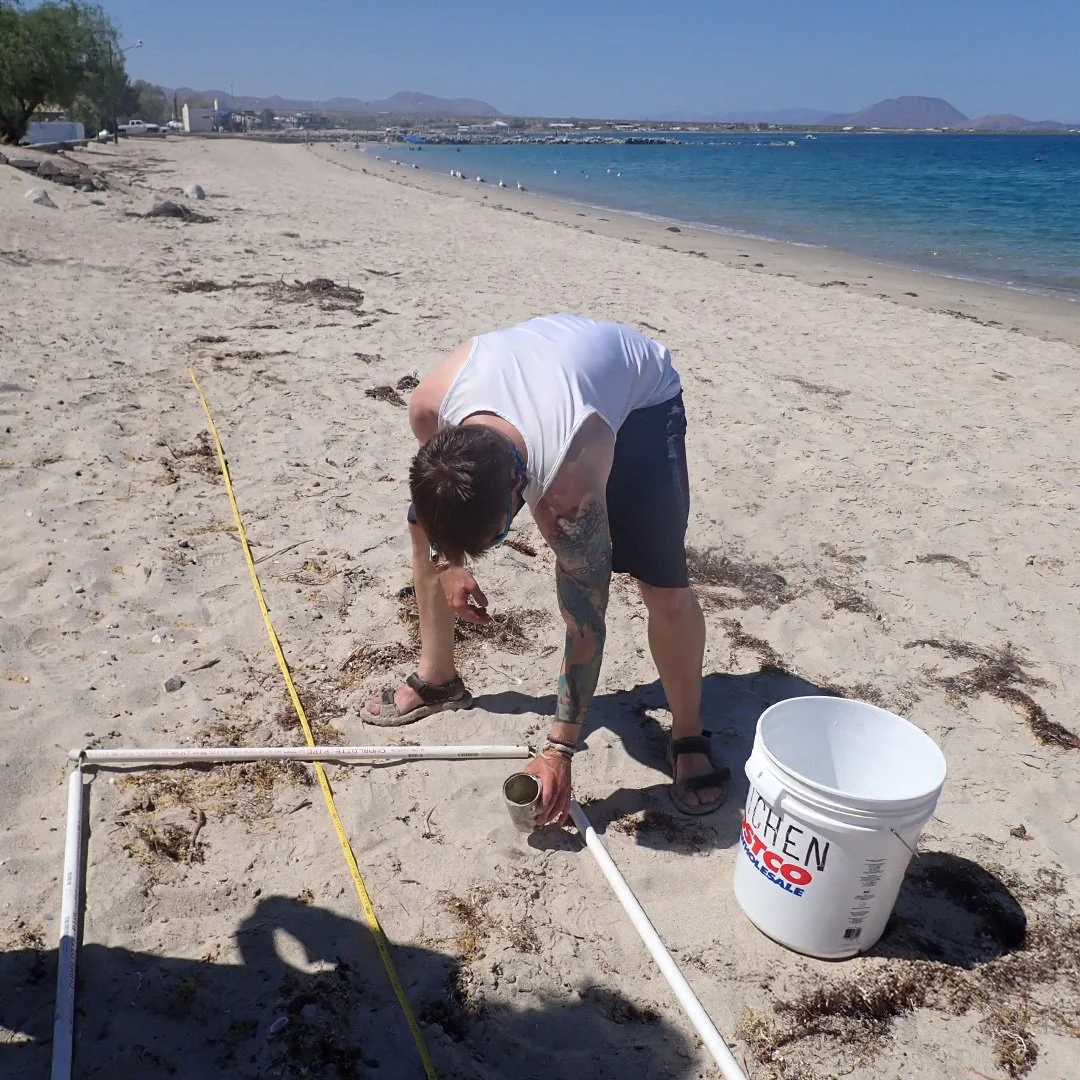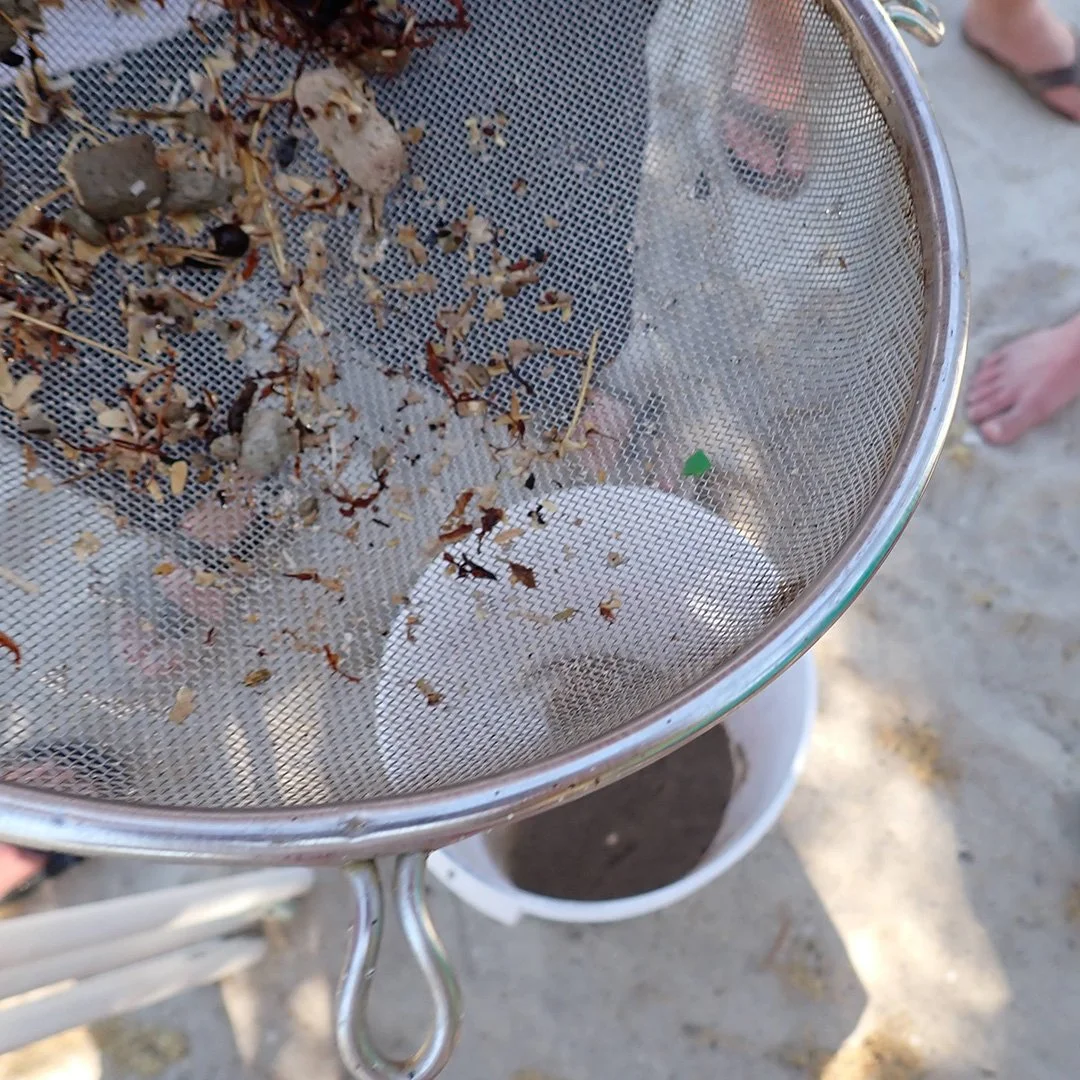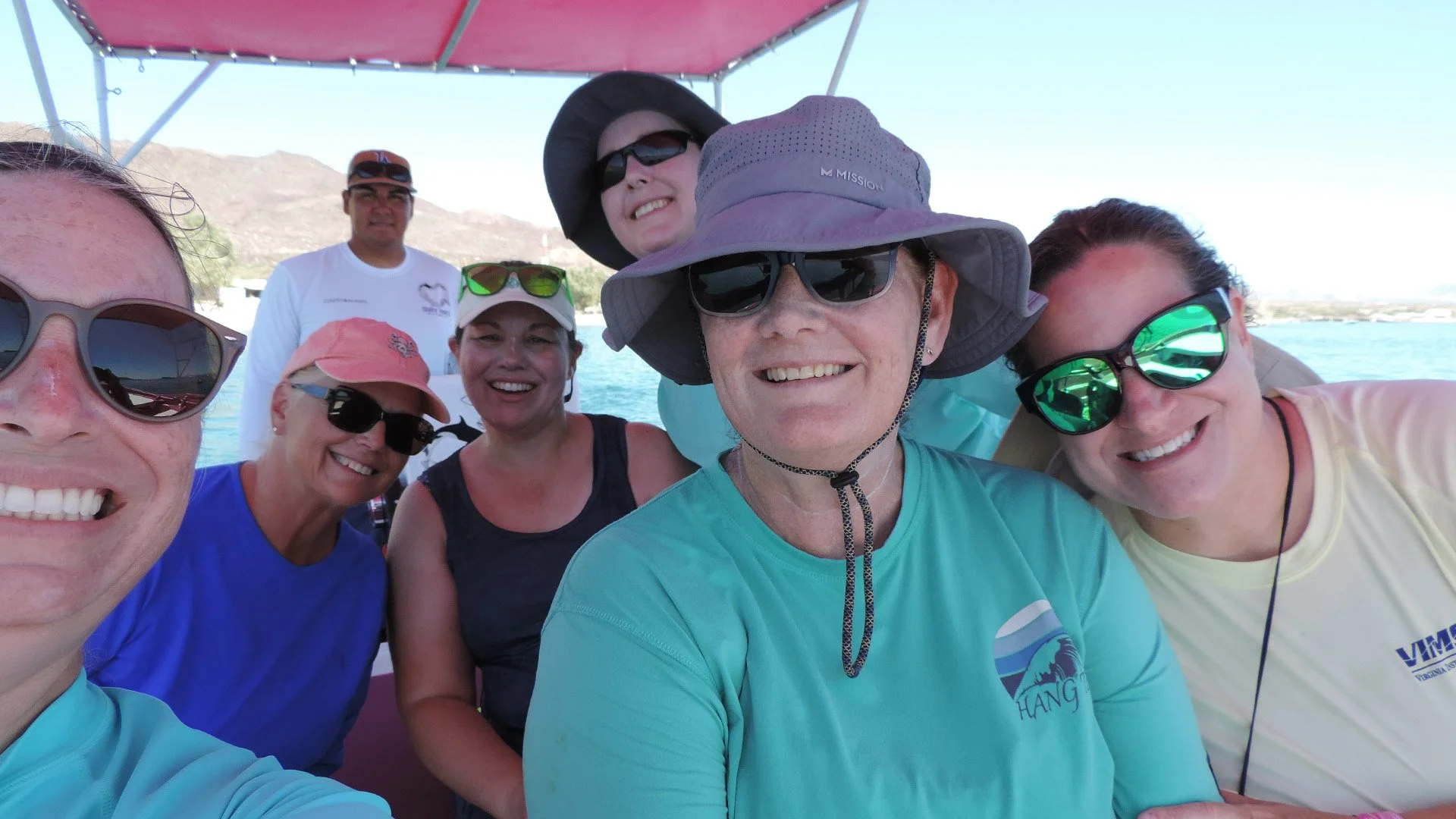From Stars to Sea: NMEA Members Dive into Whale Shark Research in Baja
Whale shark from surface
Earlier this summer, Board Members and members from the MAMEA and SENEME chapters of the National Marine Educators Association joined the Vermilion Sea Institute’s Stars to Sea community science project in Bahía de los Ángeles, Baja California, Mexico. The initiative centers on one of the ocean’s most iconic gentle giants—the whale shark—and blends science, technology, and education to better understand these migratory filter feeders. Board Member Kathy Fuller served as a trip leader, helping coordinate field activities, guide participants in data collection, and strengthen connections between educators and the local community.
In-water data collection
Armed with cameras and snorkel gear, participants collected high-quality photographs and videos of whale sharks feeding in the bay. These images were analyzed using an innovative identification algorithm—originally developed by NASA to map star constellations—that pinpoints each whale shark’s unique spot pattern. By contributing this data to global monitoring efforts, the team supported ongoing research on whale shark population size, movements, and distribution. This work directly reflects Ocean Literacy Principle 5: the ocean supports a great diversity of life and ecosystems, and documenting individual animals is key to conservation.
Spot mapping process
During the expedition, the group recorded 73 confirmed whale shark encounters. While several sharks proved too elusive for close-up imaging, the encounters provided invaluable data and unforgettable moments in the field. Beyond whale shark research, participants experienced the vibrant biodiversity of the Vermilion Sea—snorkeling with playful sea lions, watching a super-pod of common dolphins, spotting a pair of minke whales, and marveling at the bioluminescent “sea sparkle” during a nighttime swim. Octopuses, colorful reef fish, and other marine creatures rounded out the list of sightings, giving participants a firsthand connection to Ocean Literacy Principle 7: the ocean is largely unexplored and holds surprises at every turn.
Minke whale spotting
Happy to snorkel with whale sharks
Science extended beyond the water’s edge. The team conducted a microplastic survey on a local beach, observed and learned about the regional sea turtle population, and engaged local youth in hands-on marine education activities. This outreach embodies Ocean Literacy Principle 6: the ocean and humans are inextricably interconnected—and education can inspire future ocean stewards.
Sea turtle researcher talk
Conducting a microplastic survey on a local beach
Microplastic survey results
The trip was a reminder that ocean literacy is not only about understanding science but also about building relationships with communities, ecosystems, and the ocean itself. For NMEA members, the Stars to Sea project was a living classroom where scientific data collection met cultural exchange, where every splash was a chance to learn, and where the connection between the stars above and the creatures below came vividly to life—with plenty of smiles all around.
On the boat to find whale sharks
Experiences like this deepen educators’ understanding of the ocean’s complexity and inspire them to become leaders who motivate stewardship in their students. By immersing themselves in real-world research and community engagement, these educators return to their classrooms equipped not just with knowledge, but with stories, passion, and a commitment to fostering the next generation of ocean advocates.
NMEA Members in Attendance:
Kathy Fuller – NMEA Board of Directors
Valerie Cournoyer – NMEA Board of Directors
Dawn Sherwood – MAMEA Chapter Representative
Celia Cackowski - NMEA Member
In addition to contributing to whale shark science, these members helped spread the word about NMEA and encouraged fellow participants to connect with and join their local chapters—strengthening the network of educators committed to ocean literacy and stewardship.
Learn more about the Stars to Sea program at: Vermilion Sea Institute – Stars to Sea
